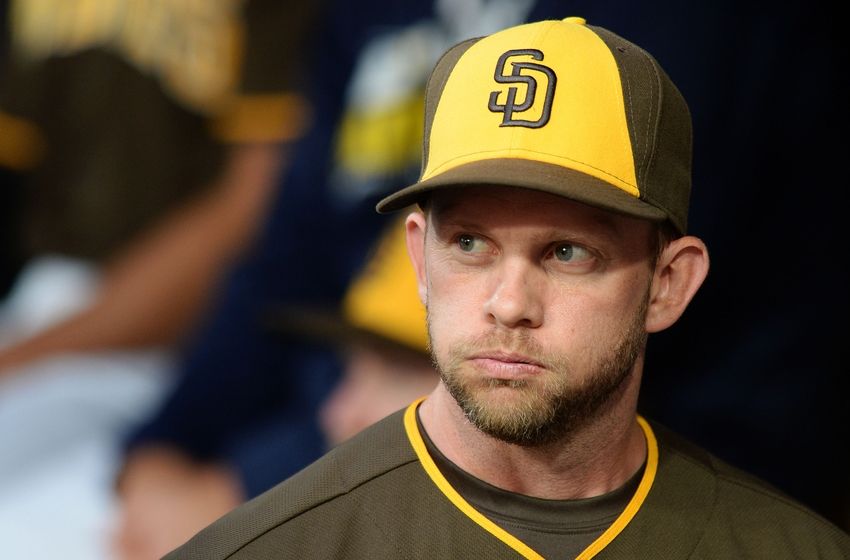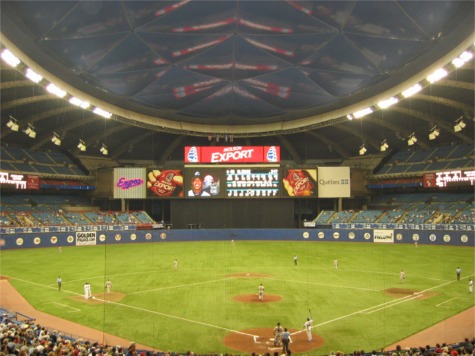The Times Other Teams Got Padres-ish

Ah, opening day.
For baseball fans, today’s season opener is one of the best days of the year. As the old adage goes, every team is in first. Hundreds of thousands of fans will walk through the turnstiles or flip on the TV thinking “Hey, this could be our year.” Maybe you even feel this way right here in America’s Finest City (bless your optimistic soul).
Spoiler alert: 2017 will not be the Padres’ year.
For those who have spent the entire winter living under a rock, the Padres are set up to have what can only be described as an awful season. To be sure, there will be some bright spots. Wil Myers will return to the Gaslamp Quarter fresh off signing the largest extension in franchise history and in pursuit of his first career 30/30 campaign. Youngsters Hunter Renfroe and Manuel Margot could end up locked in a head-to-head battle for the league’s Rookie of the Year award, the thunder-and-lightning combination sure to be at the core of lineups to come. The bullpen, fronted by Ryan Buchter and a hopefully-healthy Carter Capps, should be decent and stands a chance of being good (until the trade deadline, at least).
But as for the whole package? It’s not looking great.
Projection systems agree. Vegas has handed the team 500/1 odds of winning the title this year, the lowest in the league by a fairly healthy margin (although the similarly-tanking White Sox and Reds each gave it their best shot). FanGraphs has the Friars at a feels-too-high 0.01% chance of even making the playoffs as a wild card, also the worst in the league. They seem to be the favorite in the league to lose 100 games and a near-lock for a top-three pick in next June’s amateur draft.
As one anonymous N.L. scout put it in a Sports Illustrated article last week: “Whoo-eeeee. Well. There’s going to be a lot of growing pains.”
Sounds about right.
So we know they’re going to be bad relative to the rest of the league. But how bad could their record really look by the end of the year?
To answer this question, I performed a simple query of the Lahman baseball database – the Holy Grail of information overload for baseball geeks – to find teams who had performed similarly to how the Padres are projected to perform on both offense and defense. Looking at sabermetric forecasts of the Friars’ line-up and rotation, the team is expected to score 3.95 runs per game while giving up 4.80 runs on the same per-game basis.
Correct – that is less than ideal.

My research uncovered six other teams in the annals of baseball history who profiled similarly from a run differential standpoint. They are the precedent on which members of the Friar faithful may base their meager expectations for 2017. What follows is a brief rundown of each team’s season and how that season set them up for campaigns to come.
A little prognosticating, a little pessimism, and a whole lot of past-tense baseball storytelling? Yeah, this will be fun.
1951 Chicago Cubs
Record: 62-92 (.400 winning percentage), Finished last in the National League
Runs Scored Per Game: 3.96
Runs Allowed Per Game: 4.84
The Cubs’ 80th year of existence was certainly one to forget on the North Side. 34-year-old outfielder Hank Sauer – nicknamed The Honker – was the only real threat in the line-up, putting up an impressive 30 homers and 89 RBI’s in a season that would set the stage for his 1952 MVP campaign. Meanwhile, young third baseman Randy Jackson translated solid skills at the plate and in the field to edge Sauer for the team lead in WAR. However, a rotation carrying exactly zero ERAs under 3.79 left too much of a hole for the rest of the offense to make up for, and the Cubs stumbled to a last-place finish in the National League.
Those struggles would soon portend the signing of the franchise’s first African-American player, a young shortstop from Texas by the name of Ernie Banks. Banks, acquired by the team in 1953, would go on to a Hall of Fame career with the Cubs, winning 2 MVP awards and swatting 512 long balls over a 19-year career. Unfortunately, the man beloved as Mr. Cub was unable to carry the team back to the promised land of the postseason, a trip the Cubs wouldn’t make again until 1984.
1985 Atlanta Braves

Record: 66-96 (.407), Finished 5th in the National League West
Runs Scored Per Game: 3.90
Runs Allowed Per Game: 4.82
First off, no, that is not a typo: the Atlanta Braves really did play in the National League West at one point. As for how they finished so low in the standings, it starts with the line-up. Three regulars – catcher Rick Cerone, second sacker Glenn Hubbard, and shortstop Rafael Ramirez – batted under .250. Strikeout-laden slugger Dale Murphy – by then fully converted to the outfield after spending his early years behind the plate – slugged 37 homers and put up an eye-catching .300/.388/.539 line in a league-leading 712 plate appearances. On the pitching side of things, Hall of Famer Bruce Sutter closed out games after being acquired as a free agent over the winter, compiled 23 saves at the back-end of the bullpen. However, Pascual Perez – one of baseball’s favorite characters during the ‘80s and a man known as much for his strange baseball cards and stranger, through-the-legs pickoff move – managed to post a 1-13 record in just 22 starts.
These struggles would encourage the club to bring back Bobby Cox as their general manager for the 1986 season, and despite the continuation of these struggles (including a 106-loss 1988 campaign) during the next few seasons, Cox would eventually stay on as manager and go on to record the fourth-most wins in league history, overseeing the development of a pitching rotation fronted by Hall of Famers Greg Maddux, Tom Glavine, and John Smoltz. The Braves would soon become the dominant team in the division, running off a string of fourteen straight division titles in the 1990’s that included a World Series win over the Indians in 1995.
1998 Montreal Expos
Record: 65-97 (.401), Finished 4th in the National League East
Runs Scored Per Game: 3.98
Runs Allowed Per Game: 4.83
After looking like World Series contenders during the strike-shortened 1994 season, the Expos quickly fell off of the Major League Baseball map, and this season proved to be one of the biggest indicators of their eventual demise. The 1997 season had featured the jaw-dropping exploits of a young Dominican-born ace by the name of Pedro Martinez, who had tossed 241 innings of 1.90 ERA ball with a whopping 305 strikeouts to claim the league’s Cy Young award. Just one week after the announcement of the award, however, the Hall of Famer was shipped to the Boston Red Sox for Tony Armas and Carl Pavano.
Not surprisingly, the team’s performance quickly plummeted. The rotation and bullpen combined for a decidedly-mediocre 4.38 ERA. A 23-year-old Vladimir Guerrero took advantage of his first full season in the majors, putting up a .324/.371/.589 line while swatting 38 long balls and driving in 109 runs, while similarly-aged youngsters Mark Grudzielanek and Rondell White chipped in with string seasons of their own. However, others in the line-up, including light-hitting switch-hitter F.P. Santangelo, struggled to keep up, and the team finished last in the majors in runs.
We all know how this ended. With the front office’s salary purge resulting in a $9 million payroll when the league median ran into the low $40 millions, fans quickly lost interest in the product on the field. Combined with poor marketing efforts and a change in ownership following the sale of the team to Jeffrey Loria, the team continued to stumble, eventually relocating to Washington D.C.
PAGE 2 LINK BELOW
Noah is a current undergraduate at the University of San Diego. In addition to his classes as a Business Economics student, Noah serves as the scouting director for the nationally-ranked USD baseball team and as an NFL correspondent with The Mighty 1090. You can follow him on Twitter @thebackseatlamp
